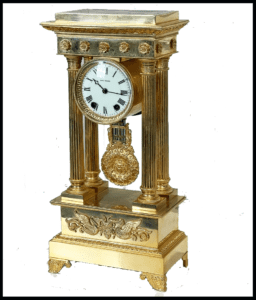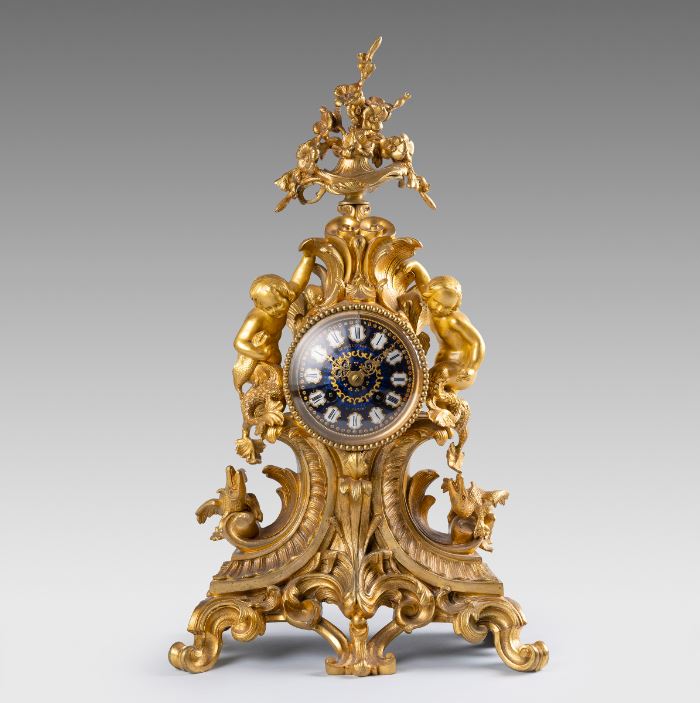Antique mantelpiece clocks are more than just timekeepers; they’re like little pieces of history that add charm to the mantel in your room. What makes these clocks so special? For starters, each antique mantelpiece clock has its own unique story. Whether it’s a Victorian beauty with intricate carvings or a sleek Art Deco design, these clocks reflect the craftsmanship and style of their era.
One of the coolest things about antique mantelpiece clocks is their variety. You can find them in all sorts of materials, from elegant porcelain to gilt bronze, and they often come adorned with beautiful details that make them stand out. Plus, they’re not just functional; they serve as stunning decorative pieces that can elevate your home decor.
If you’re lucky enough to own an antique mantelpiece clock, you’ll appreciate the way it brings a touch of nostalgia into your space. It’s like having a conversation starter right on your mantel! So whether you’re an avid collector or just someone who loves unique decor, antique mantelpiece clocks definitely deserve a spot in your heart—and your home!
The Styles Of Mantelpiece Clocks
Generally, the theme of a mantelpiece clock is derived from the era it was manufactured in. When there were kings, the style the king chose, essentially cominated all things in the home and decorations. Louis XIV, was known as the Sun King, Louis XV, followed and both styles featured lush curving and ornate mantelpiece clocks, with Louis XVI mimicking the style of ancient Greece, with it’s tall pillers and much sharper angles.
Within the period styles, there were archetectual styles of construction. The standard mantelpiece clock was rectangular and usually had a statue atop it. The portico clock, was a tall and thin mantelpiece clock, usually addorned with a large and extravagent pendulum, as it visibly hung between two pillars, front and back.

These clocks weren’t just timekeepers; they were also status symbols that reflected the tastes and wealth of their owners. Fast forward to the Victorian era, and you see a shift in design as industrialization took hold. The intricate handcrafting gave way to mass production, but that didn’t mean quality was sacrificed. Instead, we saw more whimsical designs emerge—clocks with elaborate figurines or even those that played music when the hour struck. In more modern times, mantelpiece clocks have taken on different aesthetics while still paying homage to their historical roots.
Minimalist designs became popular, often featuring sleek lines and understated elegance. However, you can still find those classic ornate styles if you’re hunting for something with a bit of drama or nostalgia. What’s interesting is how these clocks have managed to stay relevant over the years, adapting to current trends while retaining their charm. They serve not just as functional pieces but also as conversation starters in our homes today. Whether you’re drawn to vintage styles or contemporary looks, there’s a mantelpiece clock out there that perfectly fits your vibe!
Antique Mantelpiece Clock Makers
Some of the earliest mantelpiece clock artisans were Leroy, Bourett, Dubois, and Raingo Freres. These craftsmen not only created functional timepieces but also infused their work with artistic flair, making each clock a unique piece of art. Leroy was known for his intricate designs that often featured ornate carvings and detailed embellishments. Bourett, on the other hand, focused on combining elegance with simplicity, producing clocks that were both stylish and easy to integrate into various home décors.
Meanwhile, Dubois gained a reputation for innovative mechanisms that pushed the boundaries of accuracy in timekeeping. Raingo Freres became famous for their striking styles and elaborate decorations; many of their clocks showcased beautiful statues or elaborate gilt finishes that captured the attention of collectors.

As we explore these artisans further, it’s fascinating to see how each maker drew inspiration from different eras and styles—be it Rococo exuberance or Neoclassical restraint—resulting in a diverse array of mantelpiece clocks. Collecting these pieces can feel like unearthing little moments in history, each telling its own story through craftsmanship and design. Whether you’re an avid collector or simply appreciate fine art pieces, there’s something truly special about owning a mantelpiece clock made by one of these early masters.
What Drives A Mantelpiece Clock?
A mantelpiece clock had as it’s earliest drive the Fusee movement, which is essentially the same as one in a watch. The escapement movement in mantelpiece clocks same after and it is the same as that which drives carriage clocks. The silk string movement worked with a weighted pendulum that was hung from a silk string. The string could be raised or lowered to adjust the time. In the mid1800’s the silk string movement gave way to a pendulum hanging between a forked verge, which it pushed as it swung, as did the silk string movement in a mantelpiece clock, but hung from a suspension made of a thin piece of brass or steel. In both cases, the pendulum moved the verge and the verge moved a wheel inside of the clock that advanced the hands. That wheel is the escapement, or escape wheel.


